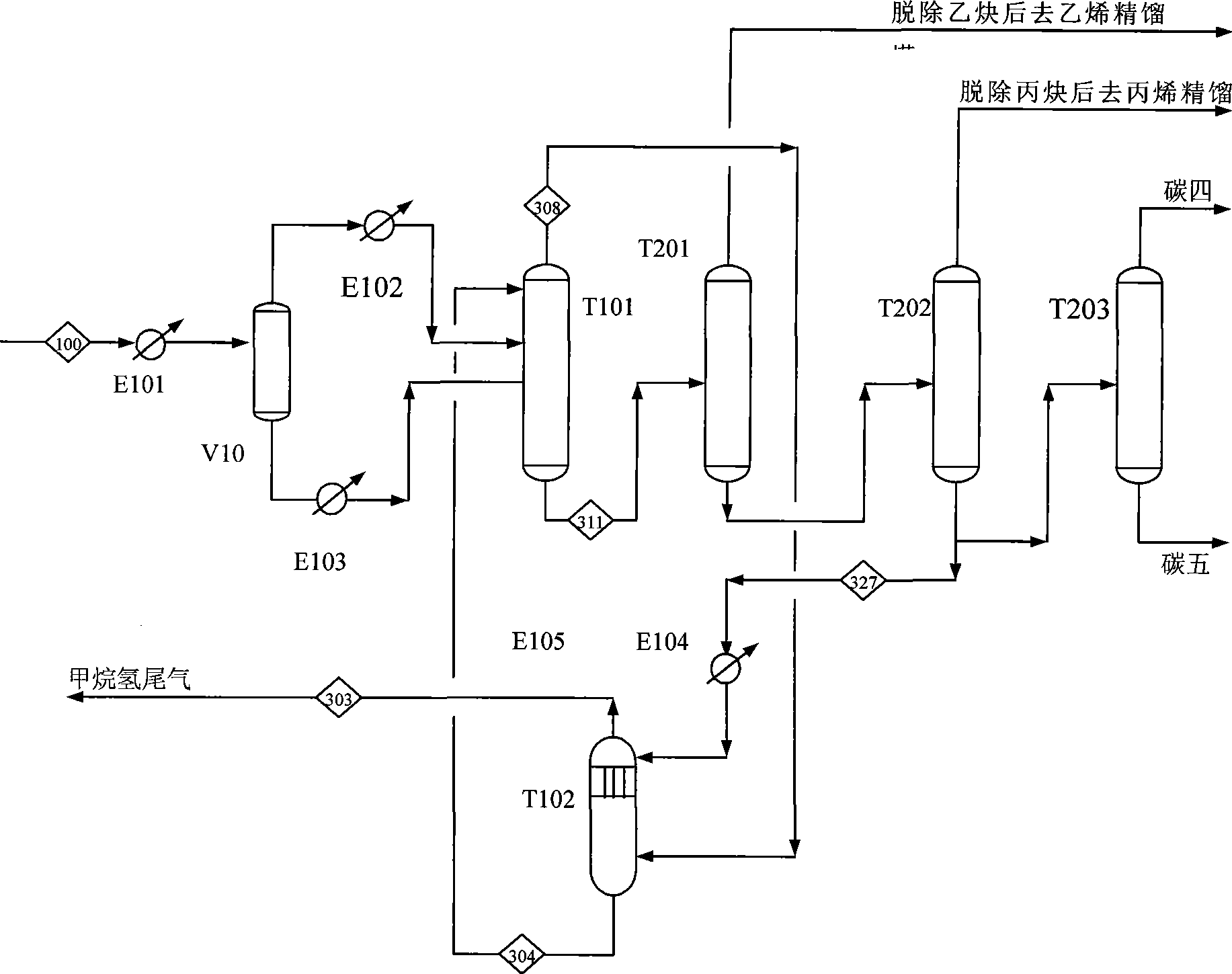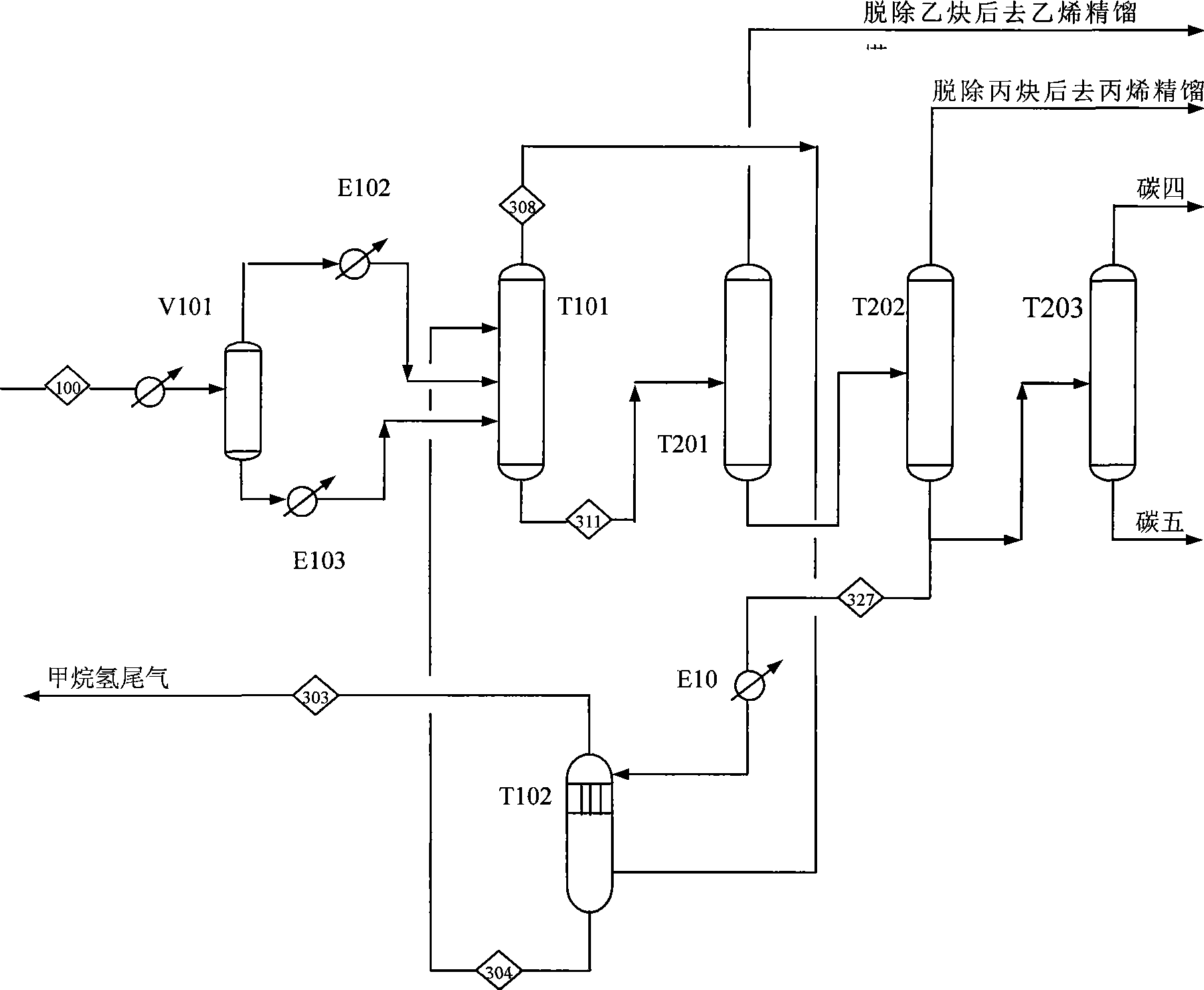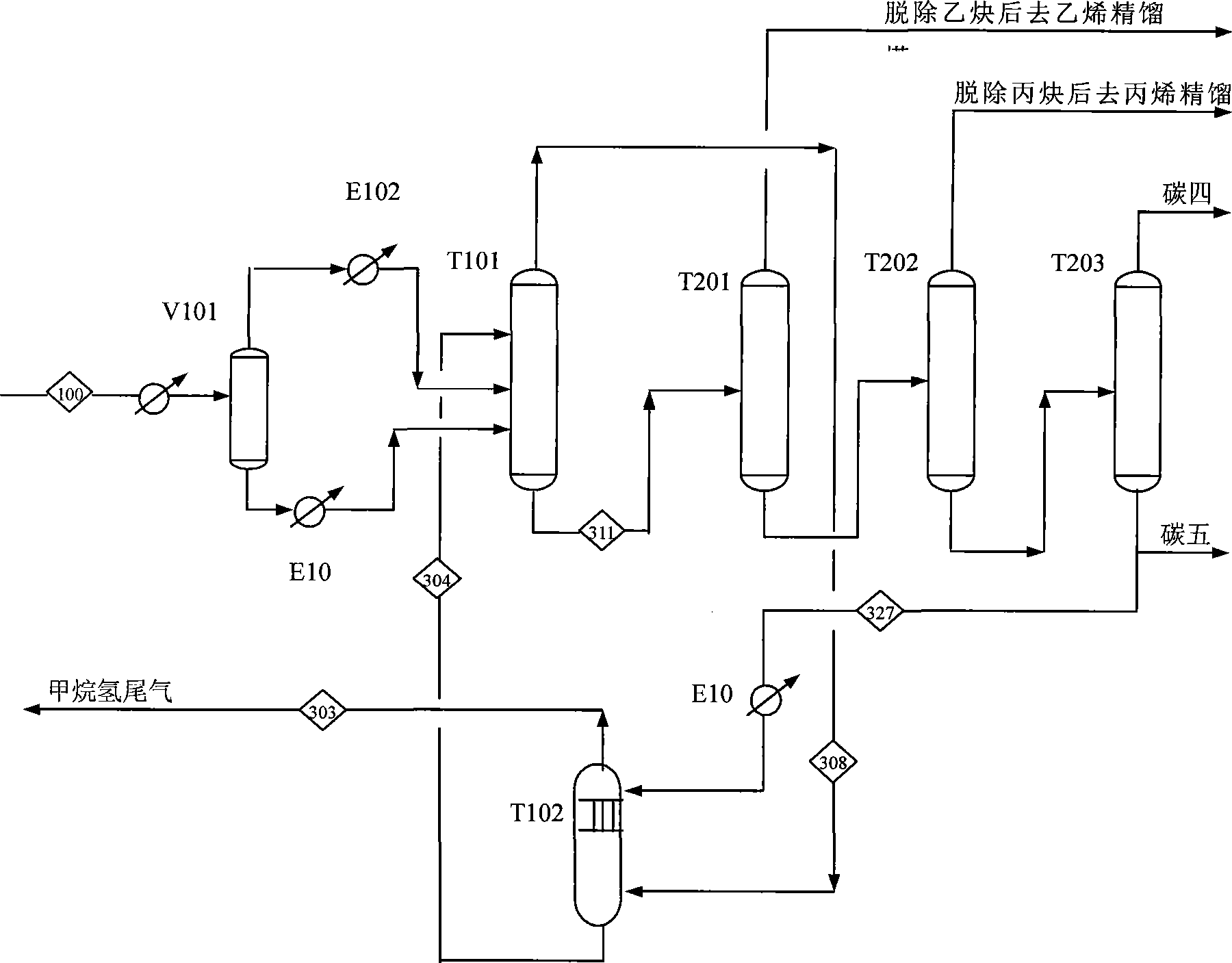Method for separating lower hydrocarbon containing light gas by combining distillation and solvent absorption
A solvent absorption and separation method technology, applied in the field of oxide conversion to produce olefins and hydrocarbon cracking to produce olefins, can solve problems such as low investment and energy consumption
- Summary
- Abstract
- Description
- Claims
- Application Information
AI Technical Summary
Problems solved by technology
Method used
Image
Examples
Embodiment 1
[0045] see process image 3 , the outlet gas of a reactor enters the separation process after compression, water washing, alkali washing, removal of methanol and drying and dehydration. The gas S100 is cooled to about 10°C by the feed cooler E101 and enters the flash tank V101 for gas-liquid phase separation. The gas and liquid phases pass through the feed coolers E102 and E103 of the pre-cutting tower respectively and are further cooled, and then enter the pre-cutting tower T101. The top product S308 of the pre-cut tower T101 directly enters an absorption tower T102 with an overhead condenser using propylene refrigerant without further cooling. Absorption tower T102 uses absorbent S327 with carbon five as the main component to absorb carbon two in the feed, and S327 is cooled to -37°C with propylene refrigerant. The discharge S311 of the pre-cutting tower T101 tower kettle is C2, C3 and heavier products, which are directly sent to the deethanizer T201 for the separation of ...
Embodiment 2
[0050] see process figure 2 , the outlet gas of a reactor enters the separation process after compression, water washing, alkali washing, removal of methanol and drying and dehydration. The gas S100 is cooled to about 10°C by the feed cooler E101 and enters the flash tank V101 for gas-liquid phase separation. The gas-liquid phase enters the pre-cut tower T101 after passing through the feed coolers E102 and E103 of the pre-cut tower respectively. The top product S308 of the pre-cutting tower T101 contains all light gases and ethylene accounting for about 11% of the feed, and enters the absorption tower T102. The absorption tower T102 adopts the absorbent S327 with carbon four as the main component to absorb carbon two in the feed. The discharge S311 of the pre-cutting tower T101 tower kettle is C2, C3 and heavier products, which are directly sent to the deethanizer T201 for the separation of C2 and C3. The top product of the deethanizer T201 is C2 fraction, which is separat...
Embodiment 3
[0055] see process Figure 4 , the outlet gas S100 of a certain reactor enters the high-pressure depropanizer T202A after being compressed, washed with water, washed with alkali, dried and dehydrated. The top gas of the high depropanizer T202A tower is further pressurized to 3.6Mpa, and the material is cooled to 2°C to obtain a gas-liquid two-phase, and the gas-liquid phase is further cooled separately. The gas phase enters the pre-cutting tower T101, and the liquid phase is divided into two parts, one part is used as the reflux of the high-pressure depropanizer T202A, and the other part is fed into the pre-cutting tower T101. The tower overhead product S308 of the pre-cutting tower T101 is sent to the absorption tower T102 after being cooled, and this tower adopts the absorbent with propane as the main component to absorb the carbon and dihydrocarbons in the tower overhead product of the pre-cutting tower, and the methane hydrogen S313 is obtained from The tower item is disc...
PUM
 Login to View More
Login to View More Abstract
Description
Claims
Application Information
 Login to View More
Login to View More - R&D
- Intellectual Property
- Life Sciences
- Materials
- Tech Scout
- Unparalleled Data Quality
- Higher Quality Content
- 60% Fewer Hallucinations
Browse by: Latest US Patents, China's latest patents, Technical Efficacy Thesaurus, Application Domain, Technology Topic, Popular Technical Reports.
© 2025 PatSnap. All rights reserved.Legal|Privacy policy|Modern Slavery Act Transparency Statement|Sitemap|About US| Contact US: help@patsnap.com



